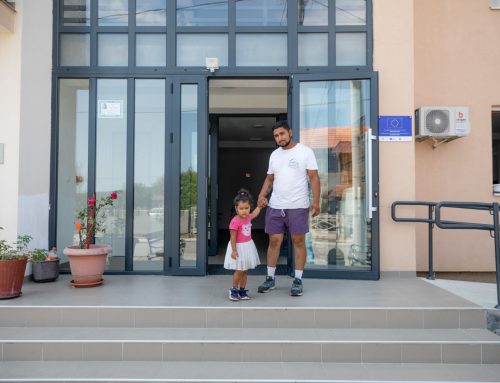At the press briefing, organised by the EU Info Centre within a series titled On the EU path: Negotiating Chapters, journalists were told that Serbia prepared a draft negotiating position for chapter 28 (consumer and health protection) in 2017 and was set to develop a new Consumer Protection Strategy to define its further policy in the area.
Yngve Engstrom of the EU Delegation to Serbia cited the possibility of offering the same rights to consumers throughout the EU as one the Union’s advantages.
What we need are solid rules to protect consumers and allow them to make informed choices when shopping, he said.
Engstrom pointed to growing online sales and added that consumer rights should be adapted to “the digital reality.”
Consumer protection needs to be strengthened and the same rights applied throughout the region, he added.
A representative of the consumer protection sector at the Ministry of Trade, Tourism and Telecommunications of Serbia Tamara Samardzic announced a new Consumer protection strategy and added that a draft negotiating position for chapter 28 had been drawn up.

FoNet
“Draft negotiating position was submitted to the European Commission for analysis and we are now waiting for their suggestions and comments. So far, the European Commission made no consumer protection-related recommendations,” she said.
Samardzic reminded that Serbia’s consumer protection policy was based on the Consumer protection strategy for the period 2013-2018.
She said that Serbia has been enforcing the Law on Consumer Protection since 2014 and fully implementing related EU directives, adding 28 registered associations offer non-institutional consumer protection.
Peter Aranyi permanent advisor to the Twinning project “Further development of consumer protection in Serbia” said that “any EU-aspiring country should secure a high and universal level of consumer protection.”
According to him, the EU bases its consumer protection policy on the European consumer protection strategy and the Consumer protection programme 2014-2020.
Promotion of consumer safety, raising awareness of consumer rights among consumers and improved implementation of consumer protection-related legislation are among the goals strived for by the European consumer protection strategy.
The purpose of Rapex, an international network facilitating information exchange among EU Member States, is to facilitate the removal of dangerous products from the EU market, he said speaking about consumer safety.
Since 2007, the network has been receiving over 2000 notifications a year regarding the products that pose a serious risk to citizens.
Dangerous products must be removed from the market, he said and added that toys account for 26% of dangerous products, followed by motor vehicles, clothes, textiles, electrical devices, cosmetic products, jewellery, lightning, etc.
Many of the dangerous products are produced in China, he said.
A representative of the European Consumer Centre in Hungary Attila Kriesch said that the goal of that organisation, and the goal of its 30 branches (28 in EU Member States and another two in Iceland and Norway) throughout Europe, is to look after interests of individual consumers and handle complaints which arise from cross-border transactions.
Kriesch said that they mainly dealt with online commerce by resolving cross-border disputes and offering free advice to consumers.




